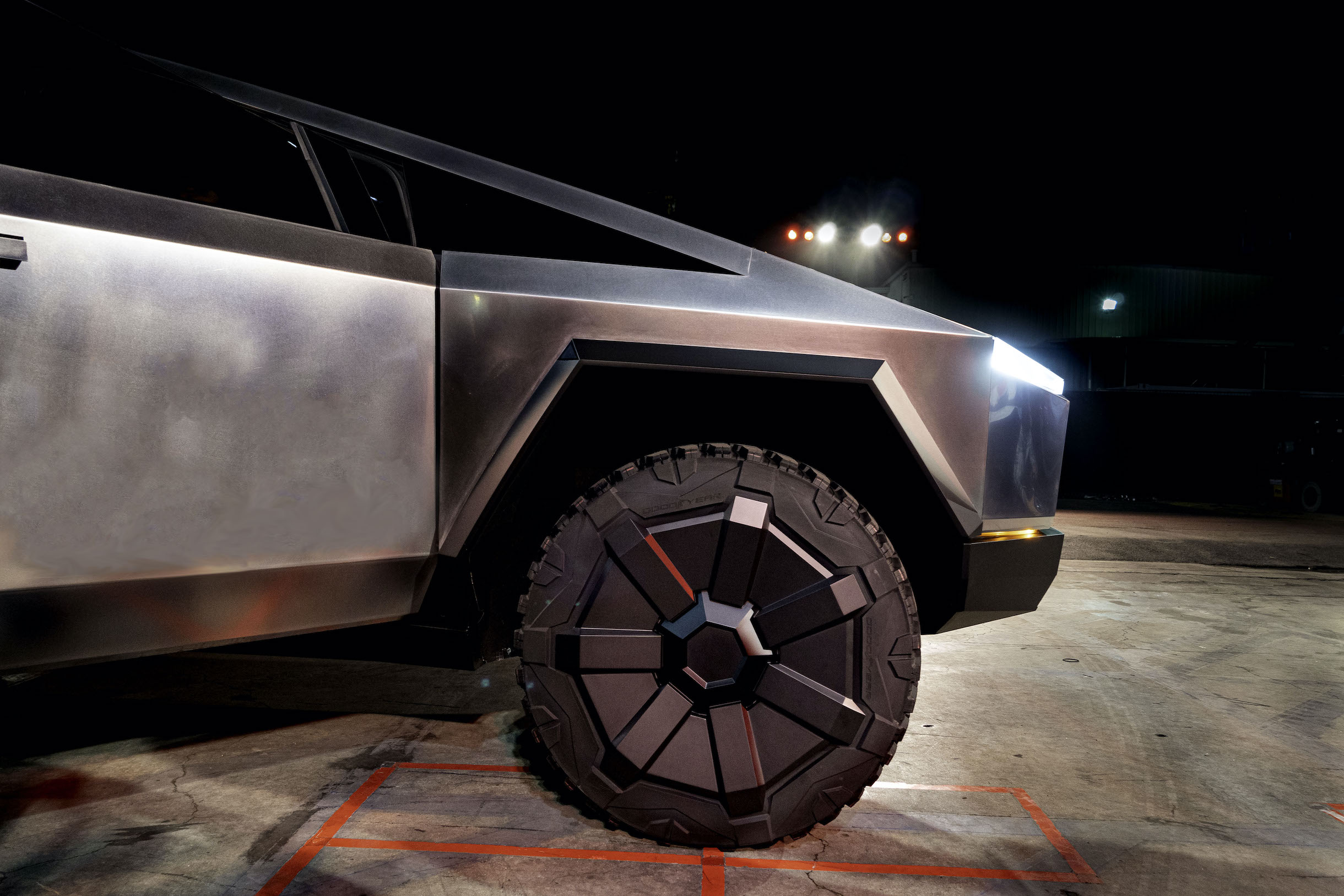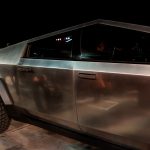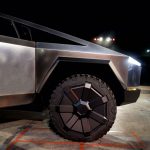

News
Tesla’s Cybertruck will set the trend for future pickup designs, like it or not
Just over 24 hours following Tesla CEO Elon Musk’s grand unveiling of Tesla’s all-electric, rough-and-tough Cybertruck, a shift in perception has begun and automakers in America’s largest market should lookout. What was widely regarded as a “love it or hate it” type of vehicle with a polarizing design that’s characterized by an unpainted steel Exoskeleton is now seeing its narrative shift towards “I must have this thing”, from “oh no, never.”
It is true that the moment the Tesla Cybertruck entered the stage was a big “WTF” moment for practically everyone in attendance at the unveiling and those watching the event online. But this moment may actually end up playing in Tesla’s favor, as the electric car maker has taken a bold step towards a future where pickup trucks are expected to not look like every other truck in the market. This puts pressure on veteran carmakers such as Ford and even upstarts such as Rivian to eventually come up with vehicles that abandon the traditional pickup truck template.
- (Credit: @rrosenbl/Twitter)
- Tesla Cybertruck self-presenting door handles (Photo: Teslarati)
- Tesla Cybertruck on stage at unveiling event in Los Angeles. Nov. 21, 2019 (Photo: Teslarati)
- Tesla Cybertruck futuristic aero wheel makes debut in Los Angeles unveiling event on Nov. 21, 2019 (Photo: Teslarati)
Tesla’s Cybertruck is not for everyone; Musk has made that clear. But considering its aggressive pricing and trademark Tesla performance, the Cybertruck will likely be attractive for enough people that it will end up finding a pretty healthy consumer base, even among those who are traditionally averse to pickup trucks. And this, of course, results in demand for the Cybertruck. After all, it’s pretty silly to assume that a fleet operator or business or police department will shun a tough vehicle that can tow more than the average diesel truck, accelerate like a sports car, and cost very little to “fuel up” just because it looks unconventional.
For these potential customers, the appearance of a vehicle may very well be secondary. What matters is if the truck works, if it will last long, and if its operating costs make business sense. The Cybertruck meets these requirements perfectly, and it does so in a way that is unashamedly electric. As such, detractors of the Cybertruck’s controversial design are best advised to be prepared, since more and more vehicles like it will likely show up on the road in the next few years, or at least within the coming decade.
New designs and concepts, after all, have a tendency to be mocked when they are first introduced. Many may not remember, but the first-generation iPhone was mocked for lacking a physical keyboard. Apple’s Airpods also looked ridiculous when they were first introduced. Even the notches on bezel-less smartphones were criticized mercilessly. Yet today, all these things are the norm. That’s just what happens when something controversial is adopted by enough consumers. Eventually, what was once unsightly or ridiculous becomes accepted.
🖤🖤🖤 Syd Mead 🖤🖤🖤 https://t.co/8nbD5LrAQJ— Elon Musk (@elonmusk) November 23, 2019
Futurists, if any, appear to be embracing the Tesla Cybertuck, at least for its unapologetically sci-fi design. Legendary Blade Runner Art Director Syd Mead, for one, has praised the vehicle, stating that the Cybertruck “has completely changed the vocabulary of the personal truck market design.” The award-winning art director also called the vehicle “stylistically breathtaking,” further stating that it has exceeded his overall expectations. CEO Elon Musk has definitely appreciated these remarks, considering that Tesla did model the Cybertruck after the vehicles in the Blade Runner franchise.
One of Syd Mead’s most famous quotes is that science fiction is “reality ahead of schedule.” With regards to his vehicle design and creations, this definitely appears to be the case, with the Cybertruck becoming a real vehicle that’s available for consumers today. Mead’s comments are, if any, validation that Tesla and Elon Musk are really onto something with the Cybertruck’s design. Half the world may just not be seeing it for now. But if consumers react positively to the vehicle, or if it does get adopted by businesses or police departments or even the army for that matter, then there is little doubt that a few more futuristic pickups would likely be released by other automakers as well — definitely sooner rather than later.
After all, why get a traditional, “boring” pickup truck when you can get a sci-fi monster machine that’s cheaper to run for the same price? That just won’t make much sense now, would it?

News
Tesla (TSLA) receives “Buy” rating and $551 PT from Canaccord Genuity
He also maintained a “Buy” rating for TSLA stock over the company’s improving long-term outlook, which is driven by autonomy and robotics.

Canaccord Genuity analyst George Gianarikas raised his Tesla (NASDAQ:TSLA) price target from $482 to $551. He also maintained a “Buy” rating for TSLA stock over the company’s improving long-term outlook, which is driven by autonomy and robotics.
The analyst’s updated note
Gianarikas lowered his 4Q25 delivery estimates but pointed to several positive factors in the Tesla story. He noted that EV adoption in emerging markets is gaining pace, and progress in FSD and the Robotaxi rollout in 2026 represent major upside drivers. Further progress in the Optimus program next year could also add more momentum for the electric vehicle maker.
“Overall, yes, 4Q25 delivery expectations are being revised lower. However, the reset in the US EV market is laying the groundwork for a more durable and attractive long-term demand environment.
“At the same time, EV penetration in emerging markets is accelerating, reinforcing Tesla’s potential multi‑year growth runway beyond the US. Global progress in FSD and the anticipated rollout of a larger robotaxi fleet in 2026 are increasingly important components of the Tesla equity story and could provide sentiment tailwinds,” the analyst wrote.
Tesla’s busy 2026
The upcoming year would be a busy one for Tesla, considering the company’s plans and targets. The autonomous two-seat Cybercab has been confirmed to start production sometime in Q2 2026, as per Elon Musk during the 2025 Annual Shareholder Meeting.
Apart from this, Tesla is also expected to unveil the next-generation Roadster on April 1, 2026. Tesla is also expected to start high-volume production of the Tesla Semi in Nevada next year.
Apart from vehicle launches, Tesla has expressed its intentions to significantly ramp the rollout of FSD to several regions worldwide, such as Europe. Plans are also underway to launch more Robotaxi networks in several more key areas across the United States.
News
Waymo sues Santa Monica over order to halt overnight charging sessions
In its complaint, Waymo argued that its self-driving cars’ operations do not constitute a public nuisance, and compliance with the city’s order would cause the company irreparable harm.

Waymo has filed a lawsuit against the City of Santa Monica in Los Angeles County Superior Court, seeking to block an order that requires the company to cease overnight charging at two facilities.
In its complaint, Waymo argued that its self-driving cars’ operations do not constitute a public nuisance, and compliance with the city’s order would cause the company irreparable harm.
Nuisance claims
As noted in a report from the Los Angeles Times, Waymo’s two charging sites at Euclid Street and Broadway have operated for about a year, supporting the company’s growing fleet with round-the-clock activity. Unfortunately, this has also resulted in residents in the area reportedly being unable to sleep due to incessant beeping from self-driving taxis that are moving in and out of the charging stations around the clock.
Frustrated residents have protested against the Waymos by blocking the vehicles’ paths, placing cones, and “stacking” cars to create backups. This has also resulted in multiple calls to the police.
Last month, the city issued an order to Waymo and its charging partner, Voltera, to cease overnight operations at the charging locations, stating that the self-driving vehicles’ activities at night were a public nuisance. A December 15 meeting yielded no agreement on mitigations like software rerouting. Waymo proposed changes, but the city reportedly insisted that nothing would satisfy the irate residents.
“We are disappointed that the City has chosen an adversarial path over a collaborative one. The City’s position has been to insist that no actions taken or proposed by Waymo would satisfy the complaining neighbors and therefore must be deemed insufficient,” a Waymo spokesperson stated.
Waymo pushes back
In its legal complaint, Waymo stated that its “activities at the Broadway Facilities do not constitute a public nuisance.” The company also noted that it “faces imminent and irreparable harm to its operations, employees, and customers” from the city’s order. The suit also stated that the city was fully aware that the Voltera charging sites would be operating around the clock to support Waymo’s self-driving taxis.
The company highlighted over one million trips in Santa Monica since launch, with more than 50,000 rides starting or ending there in November alone. Waymo also criticized the city for adopting a contentious strategy against businesses.
“The City of Santa Monica’s recent actions are inconsistent with its stated goal of attracting investment. At a time when the City faces a serious fiscal crisis, officials are choosing to obstruct properly permitted investment rather than fostering a ‘ready for business’ environment,” Waymo stated.
News
Tesla FSD v14.2.2 is getting rave reviews from drivers
So far, early testers have reported buttery-smooth drives with confident performance, even at night or on twisty roads.

Tesla Full Self-Driving (Supervised) v14.2.2 is receiving positive reviews from owners, with several drivers praising the build’s lack of hesitation during lane changes and its smoother decision-making, among others.
The update, which started rolling out on Monday, also adds features like dynamic arrival pin adjustment. So far, early testers have reported buttery-smooth drives with confident performance, even at night or on twisty roads.
Owners highlight major improvements
Longtime Tesla owner and FSD user @BLKMDL3 shared a detailed 10-hour impression of FSD v14.2.2, noting that the system exhibited “zero lane change hesitation” and “extremely refined” lane choices. He praised Mad Max mode’s performance, stellar parking in locations including ticket dispensers, and impressive canyon runs even in dark conditions.
Fellow FSD user Dan Burkland reported an hour of FSD v14.2.2’s nighttime driving with “zero hesitations” and “buttery smooth” confidence reminiscent of Robotaxi rides in areas such as Austin, Texas. Veteran FSD user Whole Mars Catalog also demonstrated voice navigation via Grok, while Tesla owner Devin Olsen completed a nearly two-hour drive with FSD v14.2.2 in heavy traffic and rain with strong performance.
Closer to unsupervised
FSD has been receiving rave reviews, even from Tesla’s competitors. Xpeng CEO He Xiaopeng, for one, offered fresh praise for FSD v14.2 after visiting Silicon Valley. Following extended test drives of Tesla vehicles running the latest FSD software, He stated that the system has made major strides, reinforcing his view that Tesla’s approach to autonomy is indeed the proper path towards autonomy.
According to He, Tesla’s FSD has evolved from a smooth Level 2 advanced driver assistance system into what he described as a “near-Level 4” experience in terms of capabilities. While acknowledging that areas of improvement are still present, the Xpeng CEO stated that FSD’s current iteration significantly surpasses last year’s capabilities. He also reiterated his belief that Tesla’s strategy of using the same autonomous software and hardware architecture across private vehicles and robotaxis is the right long-term approach, as it would allow users to bypass intermediate autonomy stages and move closer to Level 4 functionality.












